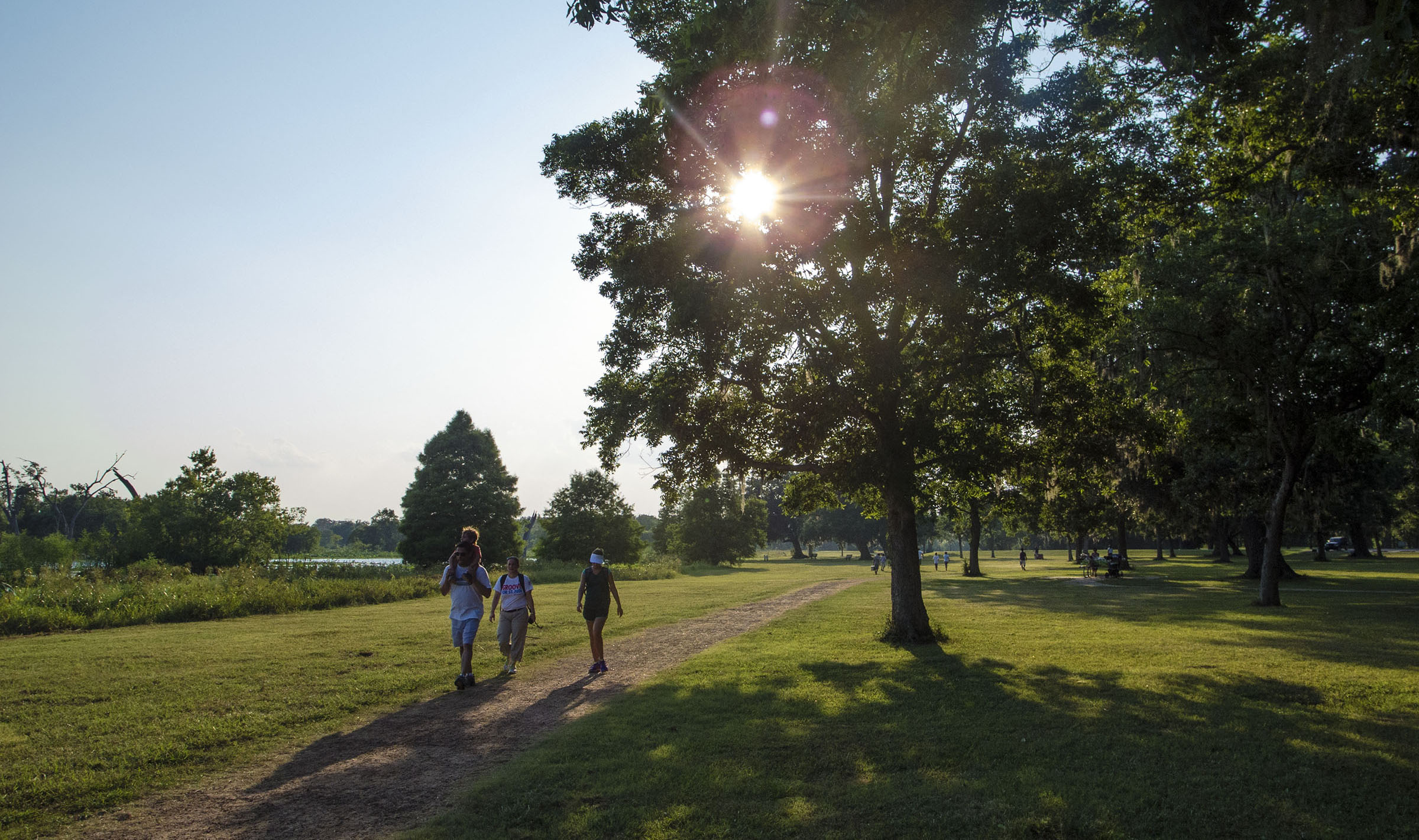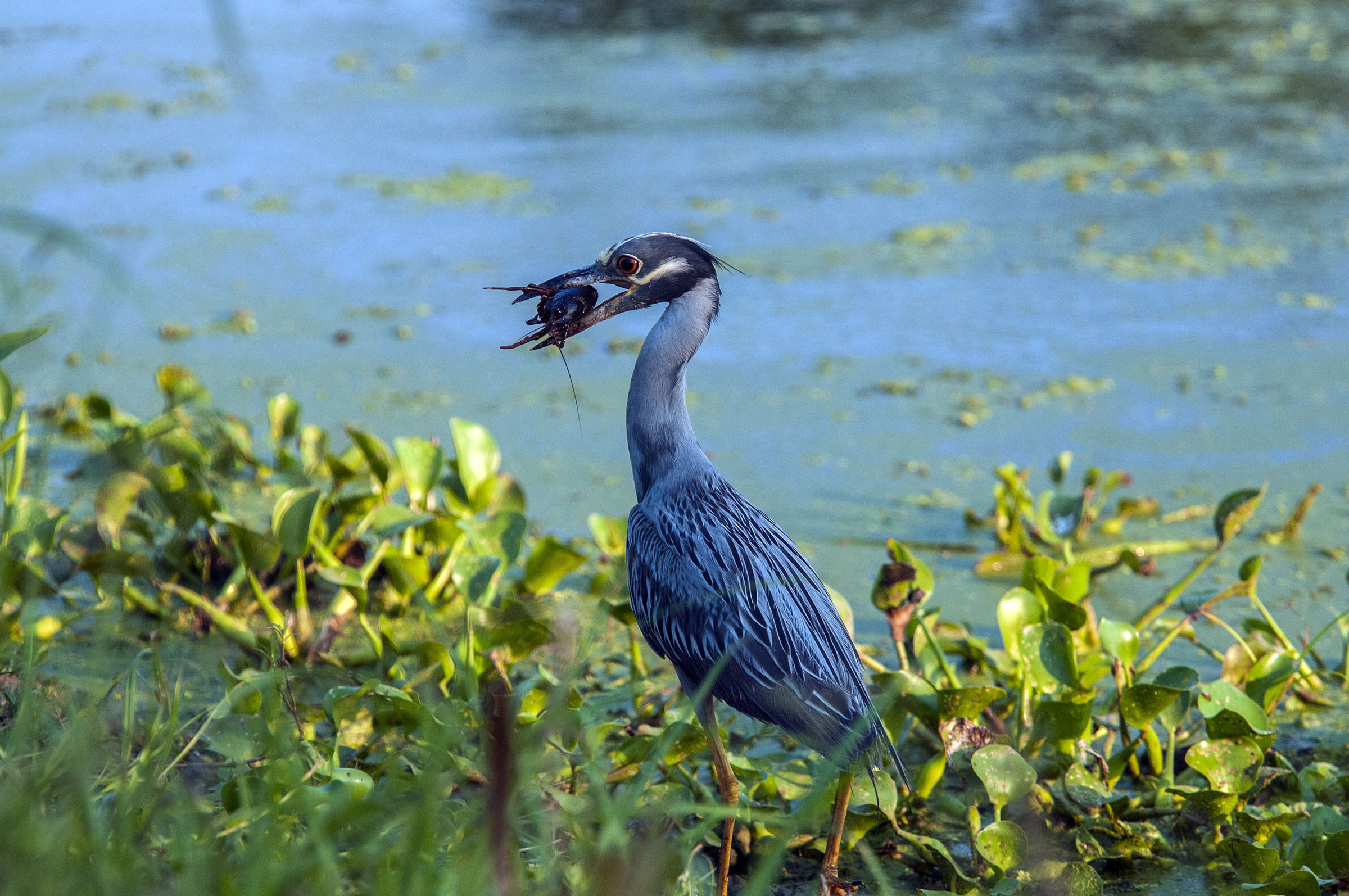
A diversity of ecology, including lakes, coastal prairie, and marshes, make Brazos Bend State Park an ideal place for birding hikes. Photo by Kevin B. Stillman.
The Texas State Parks system marks its 100th anniversary this year. With 89 parks, natural areas, and historic sites to choose from, visitors can experience all kinds of outdoor activities. Each month, we’re highlighting one of these activities based on the season and special occasions around the state.
Brazos Bend State Park this time of year is for the birds. Pardon the cliche, but it’s true: Fall migration turns the park near Houston into a birder’s paradise. Observers have documented hundreds of species here and most are easy to spot, even for non-birders.
“Late fall and early winter, we are kind of a stopover for many birds before they go farther south,” says Jessica Bullard, park volunteer services coordinator. She explains how the park is situated on a convergence of ecosystems, with lakes, bottomland hardwood forest, coastal prairie, swamps, and marshes. “This diversity of ecosystems leads to huge diversity of wildlife. The park is a great spot for birds as it has food and safe places to rest—everything they need to survive.”
One of Bullard’s favorite places to see feathered friends is at 40 Acre Lake. A 1.2-mile trail circles the lake and from an observation tower that sits between it and the larger Pilant Lake, people can see three different ecosystems. Chances are you’ll be able to see teal and other ducks, including northern shoveler ducks, during autumn. “These birds are big and very vibrant, with a bright green head like a mallard, and they use their big flat bills to sift through the water,” Bullard says. “We get lots of interesting ducks because we have marsh and swampland.”
Brazos Bend Birding Hikes
Address:
21901 FM 762
Dates: Oct. 16-17,
from 8 to 10 a.m.
Park Admission:
$7 ages 13 and older, free for 12 and under
Website: tpwd.texas.gov
Hikes meet at Elm Lake. The trail is 1.7 miles long. Bring binoculars, field guides, hat, and water.
Visitors can seek birds in the park on their own or follow park volunteers who lead periodic birding hikes, including the next ones on Oct. 16 and 17. Volunteers on these tours take you into the best viewing places, Bullard says—and the guides are happy to stop and let folks hunt for a bird.
Volunteer Marianne Feeney, who leads hikes, is all about the stopping. “Birds are just amazing creatures,” she says. “I tell people, stop, look, and listen. Sometimes birds are startled if you move quickly, but if you stop, they start coming back out and going about their way.”
While people see birds any time of day at Brazos Bend, Feeney says the old saying that the early bird gets the worm is true.
“The birds sleep all night and when they wake up, they’re hungry and start foraging. Then a lot of them take a siesta in the middle of the day,” she says. However, she adds, wading birds, including herons, egrets, and roseate spoonbills, are in the water all day.

Brazos Bend State Park offers opportunities to see birds such as the yellow-crowned night heron. Photo by Kevin B. Stillman.
Birds that Feeney likes to look for include the limpkin, a mottled brown bird with a long bill like an ibis. Feeney says they are not much to look at, but their story is fascinating. Typically found in the Caribbean and along the coasts of Central and South America and Florida, limpkins have a bill adapted for feeding on snails. The invasive apple snail has spread along the Gulf Coast, and the limpkins are following them. Both showed up at the park around 2021.
Feeney also is a fan of showy roseate spoonbills with their pink feathers and bill in the shape of a paddle. The birds swing their bill from side to side in the water to catch food. Wood storks—3-foot tall, baldheaded wading birds—are frequent visitors to the park in the fall as well.
“Another bird a lot of people come to see is the American bittern,” Feeney says. “It’s a mottled brown heron and its superpower is that it’s hard to see. You can walk right past it. But if one feels you have spotted it, it sticks its pointed bill up into the air and sways to blend in with the reeds around it.” The bird’s eyes are positioned so that it can still see ahead of it when doing this.
Sometimes bald eagles show up in winter, according to Bullard. “They don’t necessarily live here but we do see them hunting here,” she says. “Other birds of prey, including tons of vultures, roost around Creekfield Lake near the Nature Center. There can be 200 or 300 of them, which can be creepy for some people but is an amazing learning experience, because those birds are super social.”
Other bird-attracting water sources in the park include Elm Lake, which has an observation deck that provides a good place to spot birds and alligators, Hale Lake, Big Creek, and the Brazos River. Brazos Bend has a total of 37 miles of hike and bike trails, including 13 miles for horseback riding. And George Observatory, a Houston Museum of Natural Science facility, is open Saturday nights year-round, weather permitting. The observatory and nature center sell bird guides, and at the nature center, visitors can use a QR code to load a guide onto their mobile phone.
“We also have tons of reptiles, mammals, and insects, a real diversity of wildlife,” Bullard says. “You never see the same thing twice. I can’t tell you how many times I’ve driven down the main road and seen deer, otter, alligator, snakes, and random birds. The park is like a treasure chest and driving through the gate is opening the treasure chest. You never know what you’ll find.”








